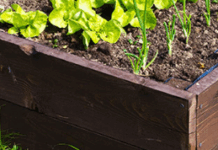The November fertilizer application on your cool season lawn is nearly upon us. A healthy lawn adds value to your home and improves the quality of the environment. Vigorously growing lawns filter out air pollution, slow movement of chemicals and fertilizers into surface water, prevent soil from washing away, and release life-sustaining oxygen. Most lawn grasses require some fertilizer every year to keep them strong and actively growing. Appropriate amounts help maintain turf vigor, but too much fertilizer can cause problems.
Lawn fertilizer contains three primary nutrients: nitrogen (N), phosphorus (P), and potassium (K). The three numbers on the label indicate the percentage of each found in the product. For example, 23–3–3 fertilizer contains 23 percent nitrogen, 3 percent phosphorus, and 3 percent potassium. Lawns generally require more nitrogen than phosphorus and potassium. The best way to determine what your lawn needs is to have the soil tested. Contact your local K-State Research and Extension office for information on submitting a soil sample.
Fescue and bluegrass lawns are best fertilized in September and November, with an optional application in May. Fertilize Bermudagrass and zoysiagrass between May and August, and buffalograss in June. Choose a slow-release nitrogen fertilizer for spring and early fall applications and a quick-release nitrogen fertilizer for late fall. Do not apply fertilizers that contain weed killers or insecticides unless they are needed.
Calibrate the spreader before use. When applying fertilizer, shut off the spreader when turning and before stopping. Turn it back on after you have resumed walking. Shut off the spreader when passing over pavement. Walk in straight lines and try not to overlap or skip areas.
Fill the spreader on a hard surface for easier cleanup. Fertilizer that falls onto sidewalks, driveways, and streets should be swept up and distributed over the lawn to keep it out of the water supply. Do not dump or wash excess fertilizer into storm drains or sewers.
After fertilizing, apply about a half-inch of water to move nutrients into the topsoil where they are more readily available to the grass. Do not apply fertilizer when heavy rain is expected. A drop spreader rather than a rotary spreader should be used when applying fertilizer near open water.
Remember that fescue and Bermudagrass are two different types of grasses that are not fertilized at the same time of year!





